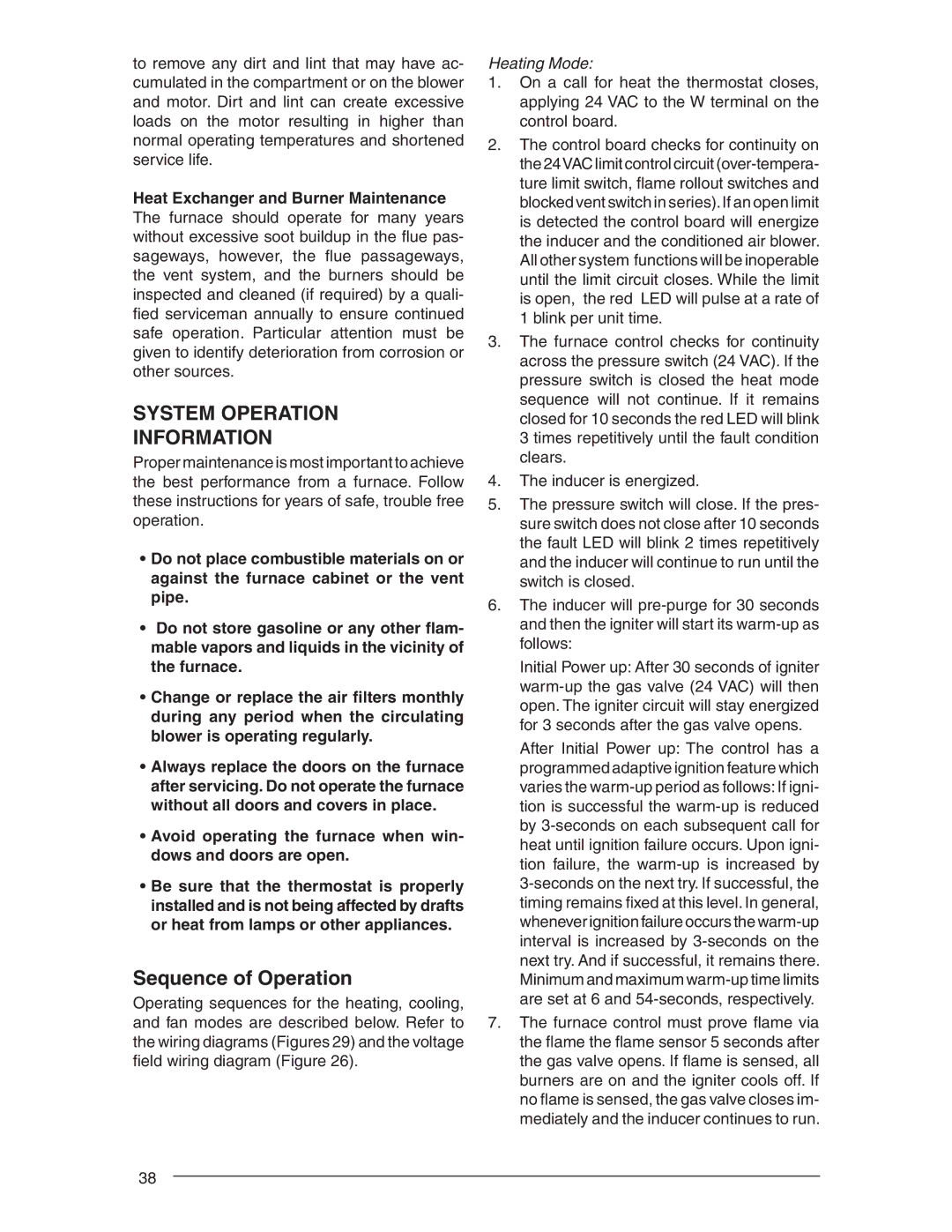to remove any dirt and lint that may have ac- cumulated in the compartment or on the blower and motor. Dirt and lint can create excessive loads on the motor resulting in higher than normal operating temperatures and shortened service life.
Heat Exchanger and Burner Maintenance The furnace should operate for many years without excessive soot buildup in the flue pas- sageways, however, the flue passageways, the vent system, and the burners should be inspected and cleaned (if required) by a quali- fied serviceman annually to ensure continued safe operation. Particular attention must be given to identify deterioration from corrosion or other sources.
SYSTEM OPERATION
INFORMATION
Proper maintenance is most important to achieve the best performance from a furnace. Follow these instructions for years of safe, trouble free operation.
•Do not place combustible materials on or against the furnace cabinet or the vent pipe.
•Do not store gasoline or any other flam- mable vapors and liquids in the vicinity of the furnace.
•Change or replace the air filters monthly during any period when the circulating blower is operating regularly.
•Always replace the doors on the furnace after servicing. Do not operate the furnace without all doors and covers in place.
•Avoid operating the furnace when win- dows and doors are open.
•Be sure that the thermostat is properly installed and is not being affected by drafts or heat from lamps or other appliances.
Sequence of Operation
Operating sequences for the heating, cooling, and fan modes are described below. Refer to the wiring diagrams (Figures 29) and the voltage field wiring diagram (Figure 26).
Heating Mode:
1.On a call for heat the thermostat closes, applying 24 VAC to the W terminal on the control board.
2.The control board checks for continuity on the 24VAC limit control circuit
1blink per unit time.
3.The furnace control checks for continuity across the pressure switch (24 VAC). If the pressure switch is closed the heat mode sequence will not continue. If it remains closed for 10 seconds the red LED will blink
3times repetitively until the fault condition clears.
4.The inducer is energized.
5.The pressure switch will close. If the pres- sure switch does not close after 10 seconds the fault LED will blink 2 times repetitively and the inducer will continue to run until the switch is closed.
6.The inducer will
Initial Power up: After 30 seconds of igniter
After Initial Power up: The control has a programmed adaptive ignition feature which varies the
7.The furnace control must prove flame via the flame the flame sensor 5 seconds after the gas valve opens. If flame is sensed, all burners are on and the igniter cools off. If no flame is sensed, the gas valve closes im- mediately and the inducer continues to run.
38
